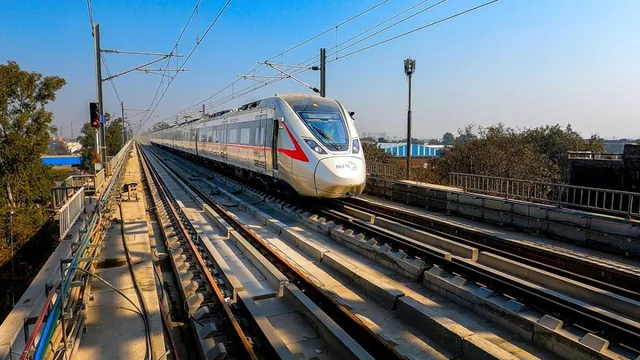- By Deeksha Gour
- Thu, 03 Jul 2025 04:50 PM (IST)
- Source:JND
Bengaluru-Mysuru Rapid Rail: A high-speed Rapid Rail Transit System (RRTS) is being planned between Bengaluru and Mysuru, which could significantly reduce the travel time between the two cities from nearly three hours to just around 70 minutes. The proposal is currently under review, with the Detailed Project Report (DPR) in the works.
Bengaluru-Mysuru Rapid Rail: Inspired by Delhi’s Namo Bharat Corridor
According to a News 18 report, the project is inspired by the Delhi–Meerut Namo Bharat RRTS and is being developed by the National Capital Region Transport Corporation (NCRTC). In Karnataka, the initiative is being pushed forward by the Bangalore Commuter Rail Corporation Ltd. (BCRCL). According to reports, the trains are expected to run at speeds of up to 200 km/h and offer frequent, reliable services for both daily commuters and intercity passengers.
Bengaluru-Mysuru Rapid Rail: DPR Underway After Pre-Feasibility Study
Officials have already completed a pre-feasibility study. The DPR is examining whether to use a combination of elevated corridors and improvements to existing railway tracks. The estimated cost of the project is expected to be between Rs 25,000 and Rs 30,000 crore, depending on the alignment and land acquisition costs.
Why Bengaluru–Mysuru Corridor Was Chosen
The Bengaluru–Mysuru stretch has been chosen due to its growing population, increasing traffic, and economic relevance. Intermediate towns like Ramanagara and Mandya are likely to benefit from better business prospects and property growth. The rail system could also help reduce road congestion and pollution levels.
ALSO READ: Bengaluru Namma Metro Yellow Line To Boost Ridership To 14 Lakh: BMRCL Chief
Bengaluru-Mysuru Rapid Rail: Major Challenges Ahead
Despite the potential benefits, the project faces several hurdles. Acquiring land across multiple districts, coordinating between government bodies and maintaining an affordable fare structure are among the major challenges. Experts have emphasised the need for fully dedicated and grade-separated tracks to ensure the trains run smoothly without delays caused by mixed-use corridors.
If the project is implemented successfully, it could transform travel in the region and improve daily commutes, tourism and intercity connectivity.

